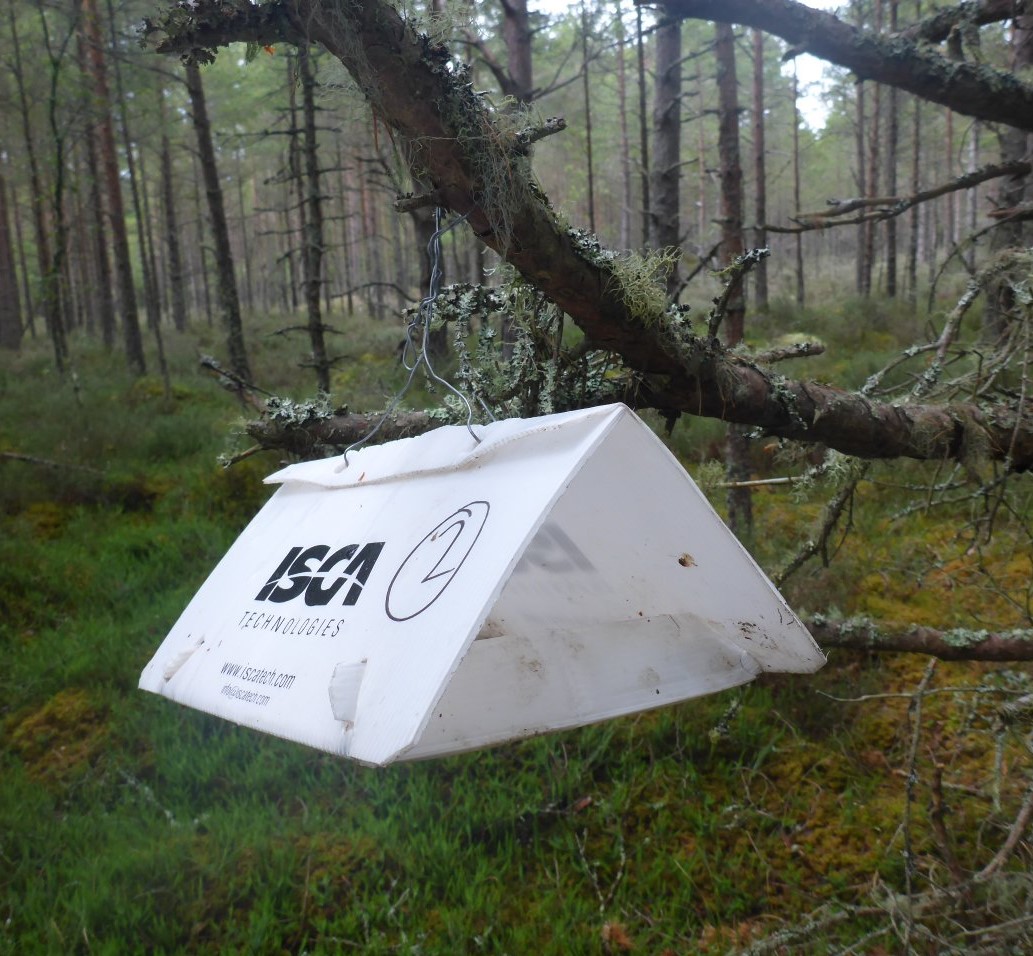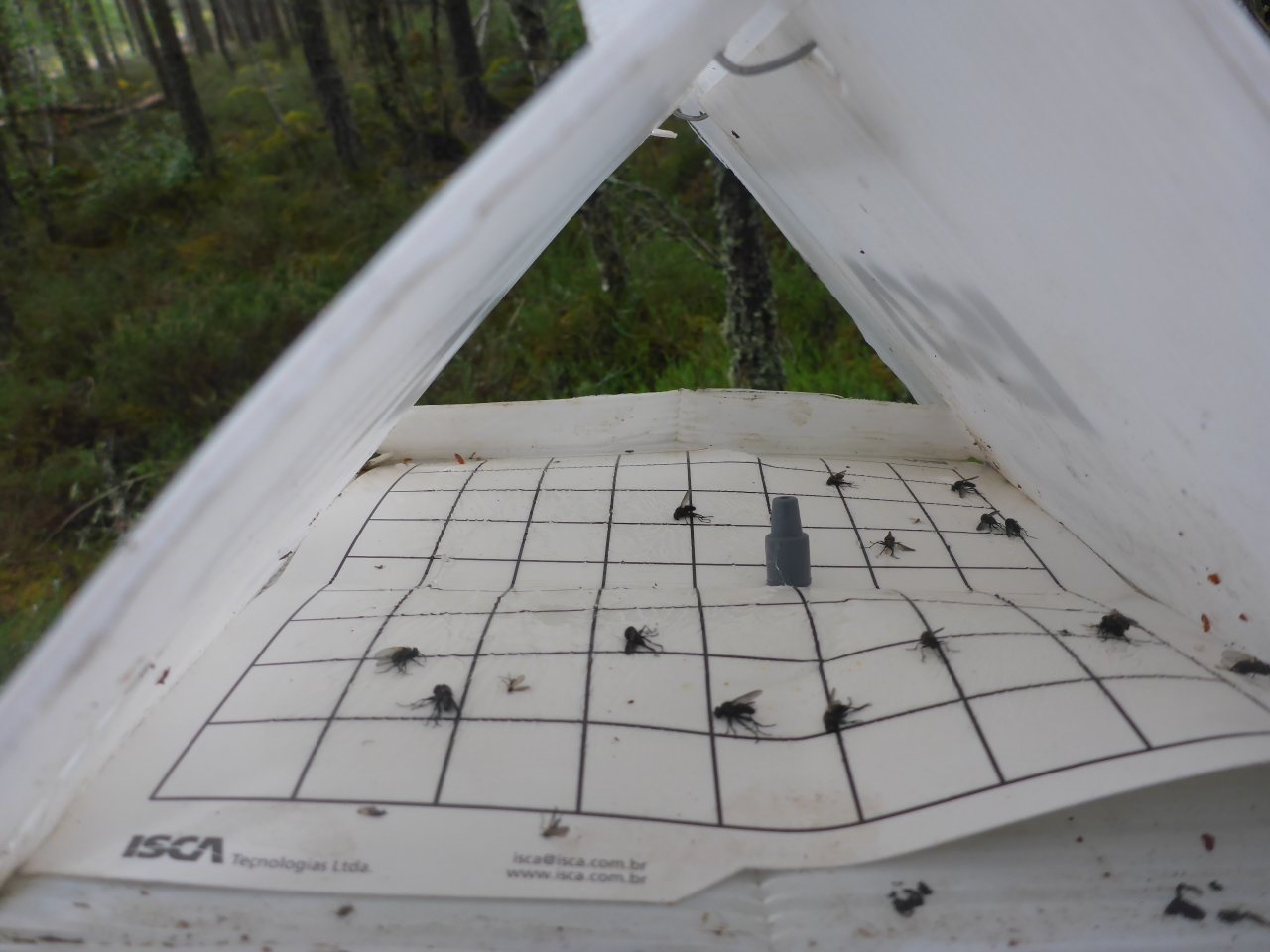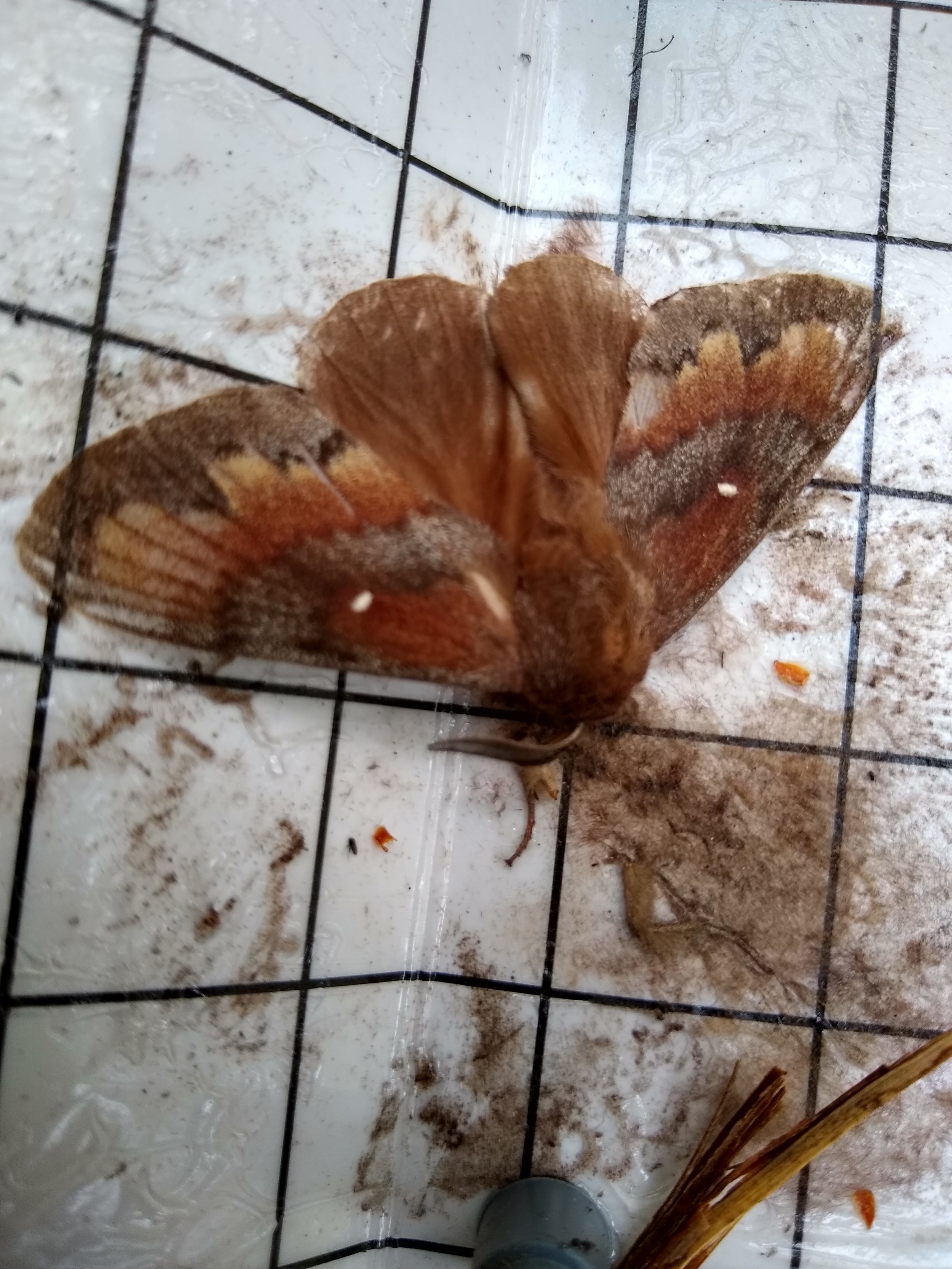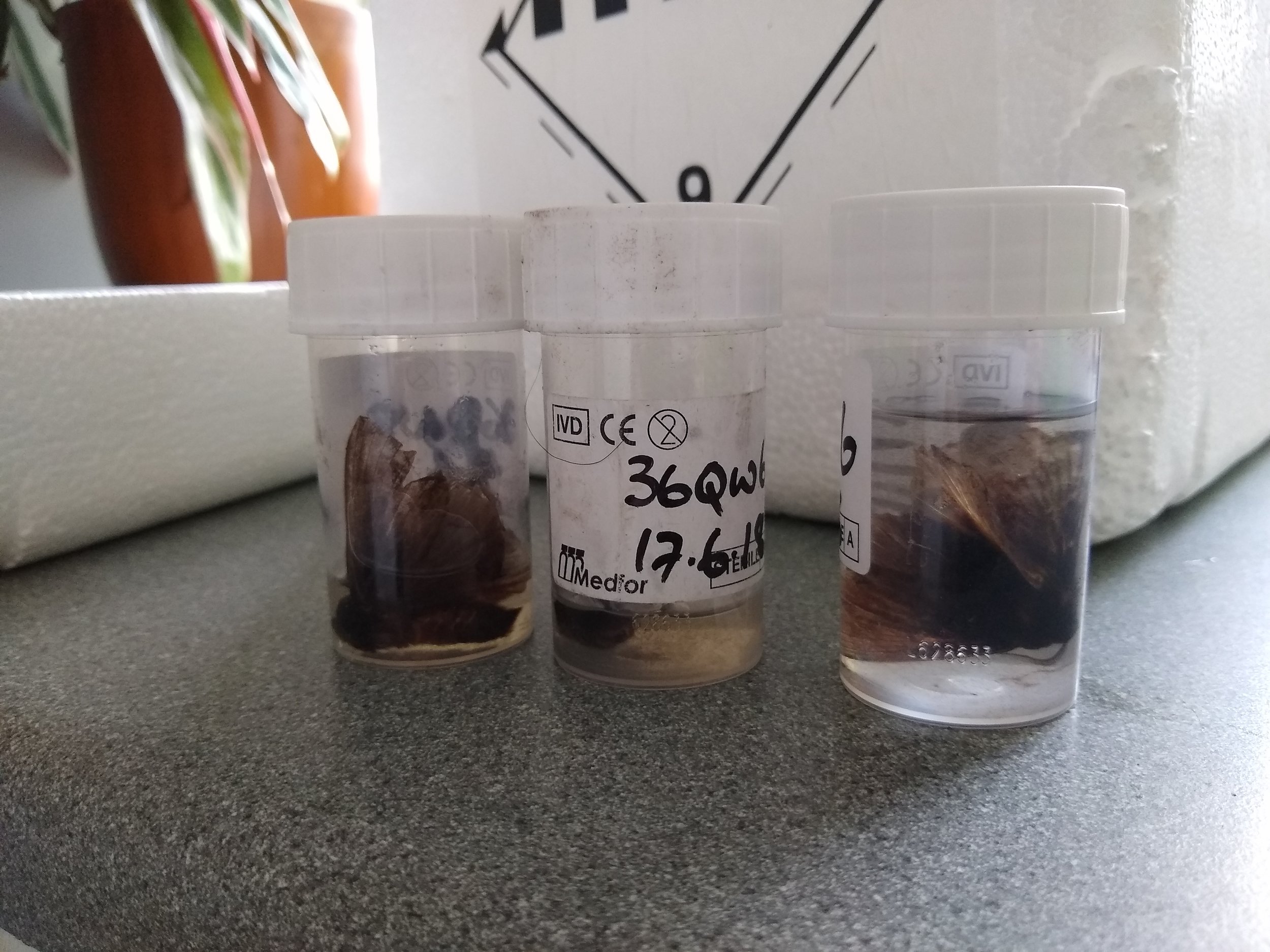Trapping the Pine Tree Lappet Moth
It's been a busy three weeks and I have the usual dread that I experience at this time of year to the effect that the summer is whizzing by and it will be over before I have even noticed that it has properly begun.
That's nonsense, of course. I have been out and enjoying the weather most days, whether doing so while at work or when undertaking chores in the garden (which is looking amazing after so many weeks of solid sun and high temps).
Even so, it passes so quickly and I cannot help but feel that I should be doing MORE to make the most of this amazing time - especially when the weather has been so unusually hot and sunny up here.
The Pine tree lappet moth, courtesy of Forest Research at https://www.forestry.gov.uk/pinetreelappet
Take today for example, in an attempt to get back on track in dealing with a slowly mounting pile of outstanding work for my regular clients, I left the house at seven to continue work on a contract I have with Forest Research for installing and monitoring Pine tree lappet moth (Dendrolimus pini) traps in the Beauly Firth area of Inverness shire.
It's not a very well paid contract. It's also somewhat irksome to perform because I need to visit the traps once every week for ten weeks to maintain them and check their contents. While this makes an impromptu summer holiday somewhat tricky to arrange, it is very interesting work and somewhat different to my usual activities.
For those that do not know, adult PTLMs were first noticed in the River Beauly catchment area in Scotland in 2004. This was (and continues to be) a problem because, although there are occasional sightings in the South of England, it is not a native species to this country and it should not be here and forming a breeding population.
In 2008, Forestry Commission Scotland was made aware of the moth's presence and immediately established an outbreak area around known breeding sites. The purpose of this was to restrict timber movements from mid May to the end of August, when there is the greatest chance of accidentally exporting the moths' eggs or larvae to new locations if they happen to be attached to freshly cut wood which is being shipped to a sawmill or other processor.
At the moment, this seems to be the only breeding population in the UK and it is contained to just a few forests within the outbreak zone.
This is the status quo that everyone is keen to see unchanged, especially because the native Caledonian pinewoods of Glen Affric are very close by and Scots pine is such an important timber crop in Scotland and the rest of the UK. In this regard, a burgeoning PTLM population would present a substantial risk to the health of those forests and, if the species spread far and wide, it could have serious repercussions for the Scots pine species, which is one of only three native conifers we have in this country (the other two are yew and juniper).
Interestingly, researchers have not yet concluded whether this is a very small but nonetheless endemic local population that took a long time to be noticed, or whether it is alien and invasive in nature. Obviously, it is important to know, so Forest Research has been using genetic analysis to try and identify if there are links to other European populations.
I am not completely up to date on the research, but I believe that many presently favour the alternative 'alien invader' hypothesis and that the gene studies undertaken to date tend to back this up.
Whether native or not, it's a bit of a mystery why the population is so localised and has not spread further considering that the moths are large enough to be blown across the English channel from time to time.
All of this preamble leads me to the specifics of today's work, where I went out to check pheromone traps that I installed in the local woods last week to catch any of these moths that may be mooching about.
Catching a moth is made easier by the use of a small rubber lure that is treated with the pheromone of choice for the moth. The lure is loaded onto a VERY sticky sheet (think flypaper) that is then placed in a small weatherproof polycarbonate tent left hanging from a tree branch in the survey woodland (see the pictures below).
The moth is attracted to the lure, enters the tent (with visions of moth-on-moth debauchery on its mind, no doubt) and then becomes irrevocably stuck to the sticky paper within, where fate decrees that it must wait until I come along and - as humanely as possible - transfer it to an ethanol solution in a small tub, to be later sent off to Forest Research for analysis.
The benefit of this work to Forest Research is that they can monitor the size of the local population and establish whether it is moving into other woods in the general vicinity. To enable this be ascertained, the traps are installed in many stands of Scots pine throughout the River Beauly catchment area, including those with known populations and those where previous trapping sessions have shown that these moths are absent.
Of course, they also obtain more material (dead moths) for their genetic research.
The benefit to me is that I get paid for a day out of the office doing something a little different.
It's a bit harder to think of any benefit to the moth.
Check out the images below for the trap design and pictures of the three moths I extracted from their sticky fates today.
For more information on the Pine tree lappet moth, please see the PTLM pages HERE for lots more interesting - and I dare say accurate - information on this unusual forest pest.




